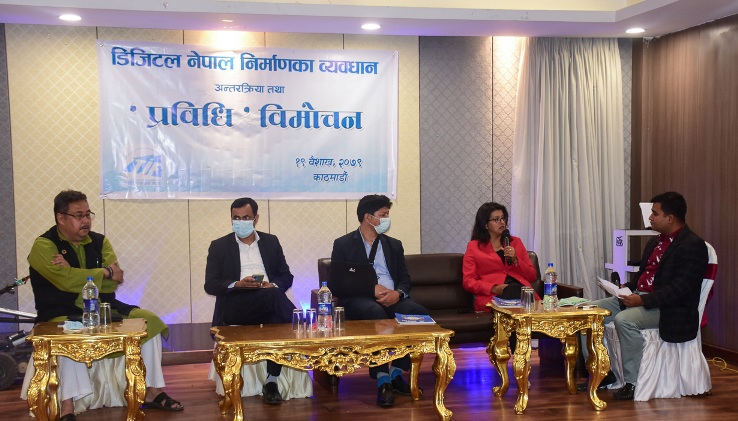Kathmandu: Stakeholders have raised their voices for the effective implementation of the ‘Digital Nepal Framework’.
Speakers of the interaction titled ‘Technology’ Journal Launch and ‘Disruption of Digital Nepal Construction’ organized by the Tech Journos Forum (TJF) on the occasion of National Information Technology Day have stressed the need to effectively move forward by correcting the complexities and weaknesses within the framework.
The Digital Nepal Framework, unveiled by the government in 2008, includes 80 initiatives in eight sectors. Former Vice President of Computer Association of Nepal (CAN) Sunaina Pandey said that there is a procedural hurdle for their implementation.
She said that the private sector was also taking initiative in building a digital Nepal. “The government has yet to draft an information technology bill,” she said. “The framework for building a digital Nepal needs to be modified.”
Pandey pointed out the lack of coordination and cooperation between the government and the private sector in implementing the Digital Nepal Framework as a problem.
Speaking on the occasion, Information Technology Expert Bivek Rana said that important issues like digital leadership, digital education-awareness, and credibility are missing in the framework.
He said that the emphasis should be on building an ‘ecosystem’ and not an ‘application’ while building digital Nepal.
“This framework is more focused on attracting foreign investment or investors,” said Rana, “That is not how digital Nepal can be made.”
Binod Chandra Shrestha, Deputy Director of Nepal Telecommunication Authority, said that they are working for the Digital Foundation. He said that the problem was due to procedural hurdles and a lack of coordination with stakeholders.
He said that the projects of the Rural Telecommunication Development Fund (RDTF) have been implemented through various service providers.
Deputy Secretary at the Ministry of Education, Science and Technology, Subash Dhakal, said that the service seekers have to suffer more when government agencies go online.
“Focusing on technology alone will not solve the problem,” said Dhakal, who is involved in drafting the framework. There is no problem with the domain of the digital foundation we created. There is a problem in its effective implementation.”
Explaining the Digital Nepal Framework as a ‘guiding framework’, Dhakal said that its initiatives should be implemented on a priority basis.
As its financial model is unclear, he suggested allocating projects on the basis of competition.
